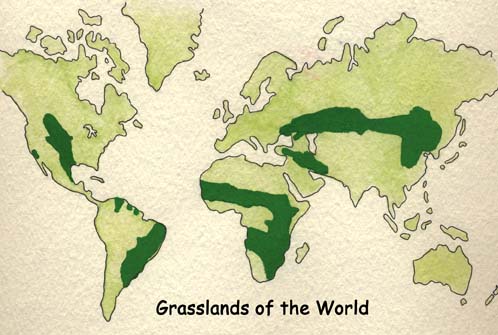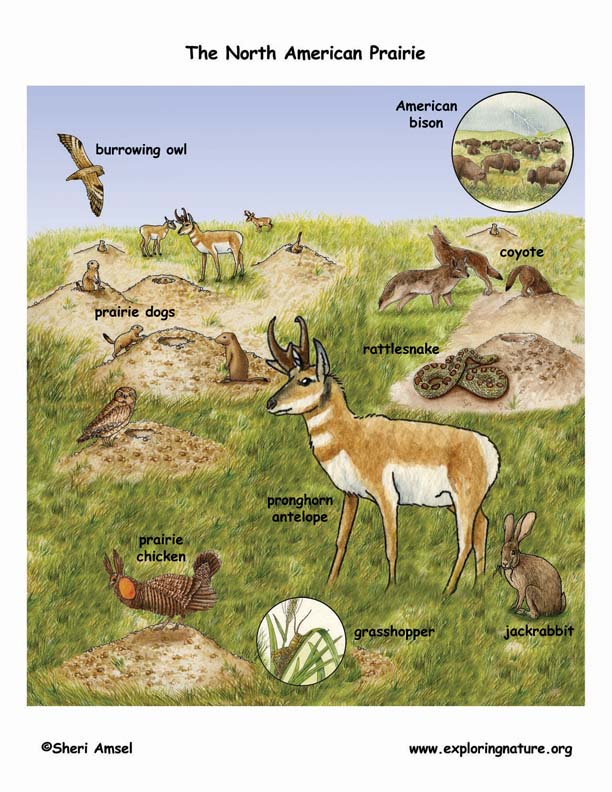

Imagine a sea of waving grass. In some places the grass grows as tall as an elephant. In the distance, a great plain of grass spreads out with only a few shrubs to be seen and a lonely grove of trees where a river cuts through. In this place it is too dry for trees, but too wet for desert plants. The grasslands of the world are found between the wet forests and the dry deserts.
Since there are few trees to nest or hide in, some of the larger animals survive by speed. They are among the fastest animals in the world. Because danger can come from many directions, animals often travel together in herds.
Small animals make their homes in burrows on the grassland. In this way they are protected from the shadeless heat of the day, the cold of the night, and hungry predators. Even raging grass fires do not threaten life underground.
The grasses can grow back even after animals graze on them or fires burn them. In their bare, open beauty, the grasslands seem strong and lasting. All over the world, grasslands have provided the most fertile soil and richest grass cover.
As farmers and ranchers have fenced and plowed these plains, the character of the grasslands has been changed forever. Farmed and grazed, the fertile topsoil is often washed or blown away. This once rich land then becomes more of a desert land, supporting less and less life.
In the U. S. small areas of tall grass prairies are being replanted with as many of their original plants as possible. In Africa national parks have been set up to try and protect the disappearing wildlife that are being pushed out by more and more (cows and goats) livestock. In the future, maybe we can bring back and save the natural, rich treasures of the world’s grasslands.
When you research information you must cite the reference. Citing for websites is different from citing from books, magazines and periodicals. The style of citing shown here is from the MLA Style Citations (Modern Language Association).
When citing a WEBSITE the general format is as follows.
Author Last Name, First Name(s). "Title: Subtitle of Part of Web Page, if appropriate." Title: Subtitle: Section of Page if appropriate. Sponsoring/Publishing Agency, If Given. Additional significant descriptive information. Date of Electronic Publication or other Date, such as Last Updated. Day Month Year of access < URL >.
Amsel, Sheri. "About Grasslands" Exploring Nature Educational Resource ©2005-2024. March 28, 2024
< http://www.exploringnature.org/db/view/1718 >

